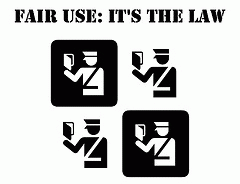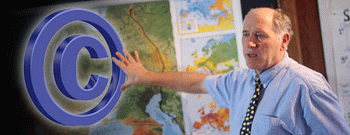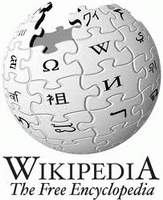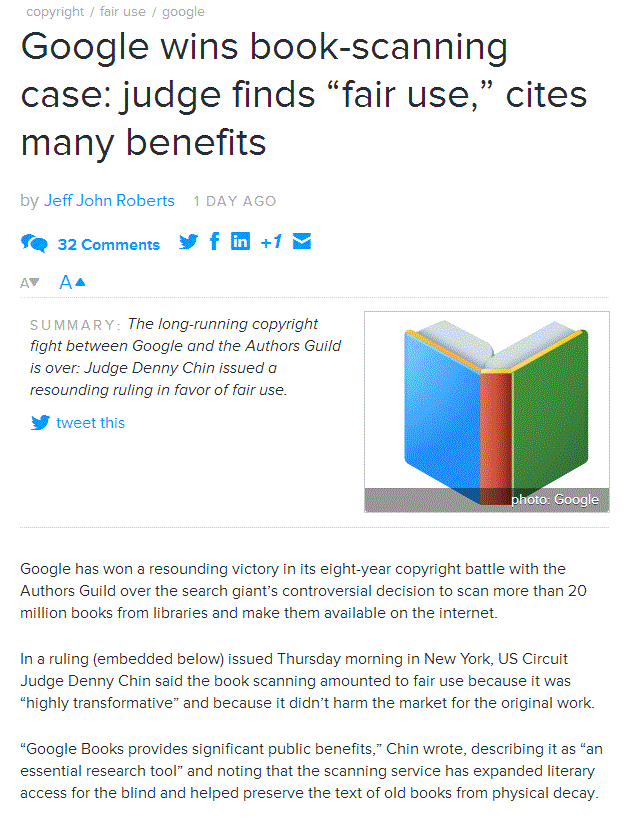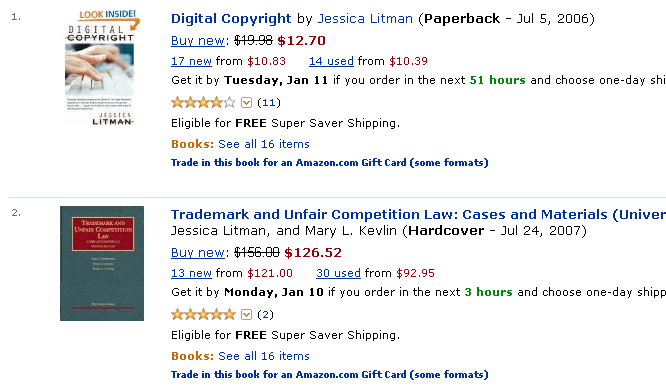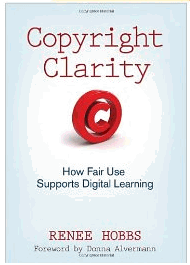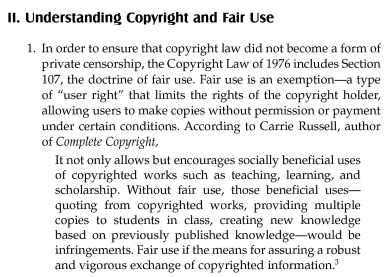

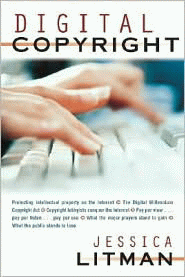
Digital Copyright – by Jessica Litman
The doctrine of fair use is described at 17 U.S.C. Section 107.
Sec. 107.
Limitations on exclusive rights: Fair use Notwithstanding the provisions of
sections 106 and 106A, the fair use of a copyrighted work,
including such use by reproduction in copies or phonorecords
or by any other means specified by that section,
for
purposes such as criticism, comment, news reporting,
teaching (including
multiple copies for classroom use), scholarship,
or research, is not an infringement of
copyright. In
determining whether the use made of a work in any particular
case is a fair use the factors to be considered shall
include – (1) the purpose and character of the
use, including whether such use is of a commercial nature or
is for nonprofit
educational purposes; (2) the nature of the copyrighted
work; (3) the amount and substantiality of
the portion used in relation to the copyrighted work as a
whole; and (4) the effect of the use upon the
potential market for or value of the copyrighted work. The
fact that a work is unpublished shall not itself bar a
finding of fair use if such finding is made upon
consideration of all the above factors. (United
State Code, Title 17 – Copyrights) Also see: Digital Millennium Copyright
Act – DMCA Electronic Frontier
Foundation – Intellectual
Property
New York Law
School Law Review THE
GOOGLE BOOK SETTLEMENT AND THE FAIR
USE On October 28, 2008, Google
announced that it had reached a settlement of the
class-actions brought by the Authors Guild and various
publishers. The agreement circumvents the
critical fair use issues at the heart of the legal dispute,
but it raises in turn some fundamental questions about the
administration of copyright law. Specifically, the
settlement charts new territory in the resolution of
copyright disputes through class-action litigation.
The settlement does much more than
simply allowing Google to continue within plausible fair use
parameters, i.e. digitization accompanied by search and very
limited display. Instead, it transforms the Google Book
universe into a vehicle for the direct electronic
distribution of entire manuscripts through consumer
purchases and institutional subscriptions. Controversially, the scope of works
capable of electronic distribution includes not only those
whose owners opt in, but rather all those whose owners fail
to opt out. see:
The “fair use” exemption to
(U.S.) copyright law was created to allow things such as
commentary, parody, news reporting, research and education
about copyrighted works without the permission of the
author. That’s vital so that copyright law doesn’t block
your freedom to express your own works — only the ability
to appropriate other people’s. Intent, and damage to the
commercial value of the work are important
considerations. Fair use should not harm the
commercial value of the work — in the sense of people no
longer needing to buy it (which is another reason why
reproduction of the entire work is a problem.) The “fair use” concept varies from
country to country, and has different names (such as “fair
dealing” in Canada) and other limitations outside the
USA. Facts and ideas can’t be
copyrighted, but their expression and structure can. You can
always write the facts in your own wordsthough See the Digital Millennium
Copyright Act DMCA
alert for recent changes in the law. Source: Copyright
Myths
How does the court know
if a use is fair? Whether a use is fair will depend on
the specific facts of the use. Note that attribution has
little to do with fair use; unlike plagiarism, copyright
infringement (or non-infringement) doesn’t depend on whether
you give credit to the source from which you copied. Fair
use is decided by courts on a case-by-case basis after
balancing the four factors listed in section 107 of the
Copyright Act. Those factors are: The purpose and
character of the use of copyrighted work Transformative quality – Is the new
work the same as the copyrighted work, or have you
transformed the original work, using it in a new and
different way? Commercial or noncommercial –
Will you make money from the new work, or is it intended for
nonprofit, educational, or personal purposes? Commercial
uses can still be fair uses, but courts are more likely to
find fair use where the use is for noncommercial
purposes. The nature of the copyrighted
work A particular use is more likely to
be considered fair when the copied work is factual rather
than creative. The amount and substantiality of
the portion used in relation to the copyrighted work as a
whole How much of the copyrighted work did
you use in the new work? Copying nearly all of the original
work, or copying its “heart,” may weigh against fair use.
But “how much is too much” depends on the purpose of the
second use. Parodies, for example, may need to make
extensive use of an original work to get the point
across.2 The effect of the use upon the
potential market for or value of the copyrighted
work This factor applies even if the
original is given away for free. If you use the copied work
in a way that substitutes for the original in the market,
that will weigh against fair use. Uses of copyrighted
material that serve a different audience or purpose are more
likely to be considered fair. Source: Teaching
Copyright.org
The Berne three-step test is
a clause that is included in several international treaties
on intellectual property. It imposes on signatories to the
treaties constraints on the possible limitations and
exceptions to exclusive rights under national copyright
laws. It was first applied to the
exclusive right of reproduction by Article 9(2) of the Berne
Convention for the Protection of Literary and Artistic Works
in 1967. Since then, it has been transplanted and extended
into the TRIPs Agreement, the WIPO Copyright Treaty, the EU
Copyright Directive and the WIPO Performances and Phonograms
Treaty. The test is included in Article 13
of TRIPs. It reads, Members shall confine limitations
and exceptions to exclusive rights to: 1. certain special cases
which… 2. …do not conflict with a normal
exploitation of the work and 3. …do not unreasonably prejudice
the legitimate interests of the rights holder.
Copyright and Fair Use in the
Classroom or other instructional forums, on the Internet,
and the World Wide Web Source: University
of Maryland – Library
Services What is Fair Use? Fair use is the most significant
limitation on the copyright holder’s exclusive rights.
Deciding whether the use of a work is fair IS NOT a science.
There are no set guidelines that are universally accepted.
Instead, the individual who wants to use a copyrighted work
must weigh four factors: The purpose and character of the
use: Is the new work merely a copy of the
original? If it is simply a copy, it is not as likely to be
considered fair use. Does the new work offer something
above and beyond the original? Does it transform the
original work in some way? If the work is altered
significantly, used for another purpose, appeals to a
different audience, it more likely to be considered fair
use. Is the use of the copyrighted work
for nonprofit or educational purposes? The use of
copyrighted works for nonprofit or educational purposes is
more likely to be considered fair use. The nature of the copyrighted
work: Is the copyrighted work a
published or unpublished works? Unpublished works are less
likely to be considered fair use. Is the copyrighted work out of
print? If it is, it is more likely to be considered fair
use. Is the work factual or artistic? The
more a work tends toward artistic expression, the less
likely it will be considered fair use. The amount and substantiality of the
portion used: The more you use, the less likely
it will be considered fair use. Does the amount you use exceed a
reasonable expectation? If it approaches 50 percent of the
entire work, it is likely to be considered an unfair use of
the copyrighted work. Is the particular portion used
likely to adversely affect the author’s economic gain? If
you use the “heart” or “essence” of a work, it is less
likely your use will be considered fair. The effect of use on the
potential market for the copyrighted work: The more the new work differs from
the original, the less likely it will be considered an
infringement. Does the work appeal to the same
audience as the original? If the answer is yes, it will
likely be considered an infringement. Does the new work contain anything
original? If it does, it is more likely the use of the
copyrighted material will be seen as fair use. What are the Rules for Fair Use for
Instructors? The copies should include a
notice of copyright acknowledging the author of the
work. NOTE: It is recommended that
teachers, faculty, or instructors consider both the special
guidelines for instructor and take into account the four
factors that are used to evaluate fair use when they are
deciding what and how much of a copyrighted work to
use. Copyright and Electronic
Publishing The same copyright protections exist
for the author of a work regardless of whether the work is
in a database, CD-ROM, bulletin board, or on the
Internet. If you make a copy from an
electronic source, such as the Internet or WWW, for your
personal use, it is likely to be seen as fair use. However,
if you make a copy and put it on your personal WWW site, it
less likely to be considered fair use. The Internet IS NOT the public
domain. There are both uncopyrighted and copyrighted
materials available. Assume a work is
copyrighted. Tips for the Internet Always credit the source of your
information Find out if the author of a work
(e.g., video, audio, graphic, icon) provides information on
how to use his or her work. If explicit guidelines exist,
follow them. Whenever feasible, ask the owner of
the copyright for permission. Keep a copy of your request
for permission and the permission received.
The Supreme Court of the United
States described fair use as an affirmative defense in
Campbell v. Acuff-Rose Music, Inc..[15] This means
that, in litigation on copyright infringement, the defendant
bears the burden of raising and proving that his use was
“fair” and not an infringement. Thus, fair use need not even
be raised as a defense unless the plaintiff first shows (or
the defendant concedes) a “prima facie” case of copyright
infringement. If the work was not copyrightable, the term
had expired, or the defendant’s work borrowed only a small
amount, for instance, then the plaintiff cannot make out a
prima facie case of infringement, and the defendant need not
even raise the fair use defense. Because of the defendant’s burden of
proof, some copyright owners frequently make claims of
infringement even in circumstances where the fair use
defense would likely succeed in hopes that the user will
refrain from the use rather than spending resources in his
defense. This type of lawsuit is part of a much larger
problem in First Amendment law; see Strategic lawsuit
against public participation. Because paying a royalty fee may be
much less expensive than having a potential copyright suit
threaten the publication of a completed work in which a
publisher has invested significant resources, many authors
may seek a license even for uses that copyright law
ostensibly permits without liability. The frequent argument over whether
fair use is a “right” or a “defense”[18] is
generated by confusion over the use of the term “affirmative
defense.” “Affirmative defense” is simply a term of art from
litigation reflecting the timing in which the defense is
raised. It does not distinguish between “rights” and
“defenses,” and so it does not characterize the substance of
the defendant’s actions as “not a right but a
defense.” In response to perceived
over-expansion of copyrights, several electronic civil
liberties and free expression organizations began in the
1990s to add fair use cases to their dockets and concerns.
These include the Electronic Frontier Foundation (“EFF”),
the American Civil Liberties Union, the National Coalition
Against Censorship, the American Library Association,
numerous clinical programs at law schools, and others. The
“Chilling Effects” archive was established in 2002 as a
coalition of several law school clinics and the EFF to
document the use of cease and desist letters. Most recently,
in 2006, Stanford University began an initiative called “The
Fair Use Project” (FUP) to help artists, particularly
filmmakers, fight lawsuits brought against them by large
corporations. In 2009, fair use appeared as a
defense in lawsuits against filesharing. Charles Nesson
argued that file-sharing qualifies as fair use in his
defense of alleged filesharer Joel Tenenbaum.[19]
Kiwi Camara, defending alleged filesharer Jammie Thomas,
announced a similar defense.[20] On September 2, 2009 Israeli
District court ruled out a detailed decision[21] not
allowing disclosure of “John Doe”‘s details for the request
of the English Premier League Associan based on several
reasons, but the most interesting were that “fair use” under
the new Israeli law of 2007 (which is based on the US 4
factors test) is a right and not merely a defense. The court
specifically states that the public may have base for a
legal cause of action if its fair use right is infringed by
the copyright holder. Other important decision in said
judgment is the fact that the court finds streaming Internet
filesharing site of live soccer games not infringing
copyright as this use is fair use (mainly due to the
importance of certain sport events and the public’s right).
The court analyzes the 4 factors and decides that due to
such importance of sporting games (and other less important
factors), such use is fair.
Also see: Digital Millennium Copyright
Act – DMCA Electronic Frontier
Foundation – Intellectual
Property
Educate yourself
